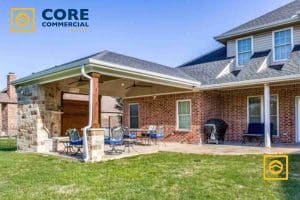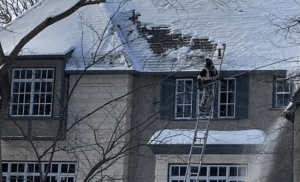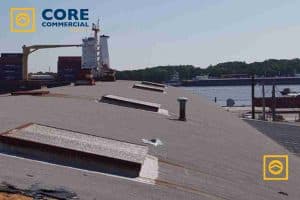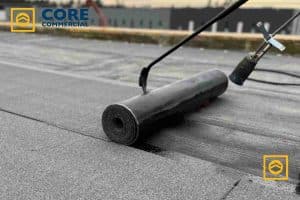If you own or manage a commercial building in Texas, you know how intense the sun and weather can be. Roof damage, high energy bills, and constant maintenance can eat away at your profits. That’s where elastomeric roof coatings come in. These coatings offer an affordable, effective way to extend your roof’s life, protect against harsh weather, and save money on cooling. This guide explores five of the most cost-effective elastomeric roof coating solutions for Texas businesses, each tailored to address real problems building owners face and deliver results that matter.
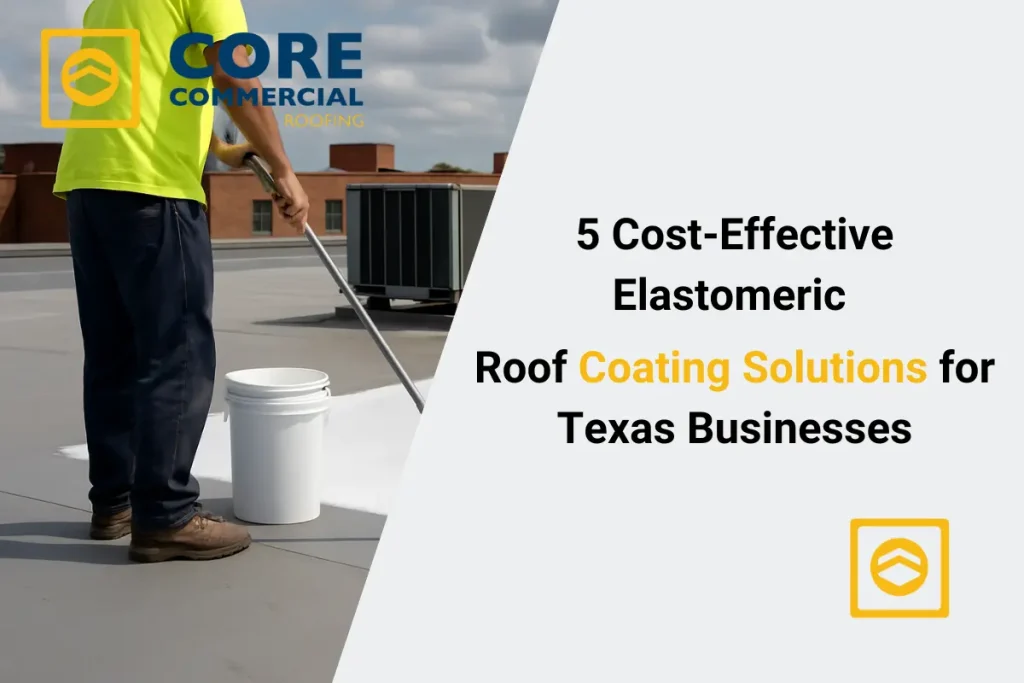
Table of Contents
Why Elastomeric Roof Coatings Matter in Texas
Beating the Heat and the Costs
Texas summers are brutal, with temperatures often climbing above 100°F. This heat can cause roof materials to expand, crack, and degrade over time. Elastomeric roof coatings reflect a significant amount of sunlight, reducing rooftop temperatures by up to 50°F. This not only extends the life of your roof but also slashes your energy bills, especially during peak cooling months.
Waterproofing Without Ripping Off the Roof
Water intrusion is another concern, particularly during Texas storms and hurricane season. Elastomeric coatings create a seamless, waterproof barrier that prevents leaks without requiring a full roof replacement. That’s a huge cost and time saver for businesses that need to stay operational.
Key Benefits of Elastomeric Coatings for Business Owners
Before diving into specific options, let’s cover why more Texas companies are turning to elastomeric coatings:
- Lower Utility Bills: These coatings reflect heat, which reduces indoor temperatures and the load on your HVAC system.
- Longer Roof Life: They prevent cracking, UV damage, and water infiltration, extending your roof’s lifespan by 10–20 years.
- Tax Incentives: Many coatings qualify as maintenance rather than capital improvements, which can have tax benefits.
- Fast, Non-Invasive Application: Most coatings can be applied directly to existing roofs, minimizing downtime.
- Sustainability: Many options are low-VOC and eco-friendly, aligning with green building standards.
1. Acrylic Elastomeric Roof Coatings
Best for: Mild to moderate climates and sloped roofs
Acrylic coatings are water-based and highly reflective, making them ideal for Texas buildings that endure intense sun. They’re affordable, easy to apply, and quick to dry.
Benefits:
- Energy-efficient: Reflects up to 85% of the sun’s rays
- Budget-friendly: One of the most affordable options
- UV resistant: Protects against long-term sun damage
- Easy maintenance: Can be reapplied every few years without full removal
Considerations:
- May degrade faster in ponding water conditions
- Not ideal for flat roofs with standing water
Real-World Result:
A logistics warehouse in Houston cut its summer cooling bills by 25% after applying a bright white acrylic roof coating.
2. Silicone Elastomeric Roof Coatings
Best for: Flat roofs and areas prone to ponding water
Silicone coatings are moisture-cured and highly flexible, which makes them perfect for flat or low-slope roofs that struggle with standing water after heavy rain.
Benefits:
- Superior water resistance: Ideal for flat roofs with drainage challenges
- Long lifespan: Often lasts 15–20 years with minimal maintenance
- UV stability: Won’t chalk, crack, or degrade under harsh sun
- Flexible application: Works on many roof types, including metal, modified bitumen, and built-up roofing
Considerations:
- Higher upfront cost than acrylic
- Slippery when wet—may require granules for walkable surfaces
Real-World Result:
A strip mall in San Antonio with chronic roof leaks used silicone coating and eliminated water intrusion for over five years, cutting repair calls by 80%.
3. Polyurethane Elastomeric Roof Coatings
Best for: High-traffic roofs or areas with heavy equipment
Polyurethane coatings are abrasion-resistant and durable, ideal for buildings with rooftop units or foot traffic, such as apartment complexes or industrial facilities.
Benefits:
- Tough and impact-resistant
- Adheres strongly to various surfaces
- Withstands foot traffic and mechanical damage
- Provides excellent waterproofing
Considerations:
- It can be more expensive than other coatings
- Typically solvent-based, may have higher VOCs unless specified
Real-World Result:
A multi-tenant facility in Dallas with rooftop HVAC units used polyurethane coating to prevent wear from constant technician traffic and extend roof life by 12 years.
4. Butyl Elastomeric Roof Coatings
Best for: Metal roofs and mobile structures
Butyl coatings are known for their strong adhesion and water-blocking ability, especially useful on mobile buildings like trailers, warehouses, and agricultural sheds.
Benefits:
- Superior adhesion to metal
- Excellent moisture barrier
- High elongation rate (good flexibility)
- Ideal for older roofs with cracks
Considerations:
- Not as UV stable as silicone or acrylic
- Requires topcoat or periodic maintenance in harsh sun
Real-World Result:
A trucking company in Fort Worth coated its metal garages with butyl and reduced rust-related damage by 90%, saving thousands in repairs.
5. Hybrid Elastomeric Coatings
Best for: Mixed-material roofs and performance balance
Hybrid systems combine the best traits of multiple materials—such as acrylic and silicone—to deliver balanced performance for a wide range of roof types and weather conditions.
Benefits:
- Customized performance: Tailored to specific needs
- Balanced UV and water protection
- Mid-range pricing
- Excellent for older buildings with mixed roofing materials
Considerations:
- Requires professional assessment for a correct blend
- The application may be more complex
Real-World Result:
A co-working complex in Austin used a hybrid solution to accommodate mixed roof surfaces. The result was a seamless finish that reduced cooling costs by 20% and extended roof life by 15 years.
How to Choose the Right Coating for Your Business
Consider These Key Factors:
- Roof Type and Slope: Flat roofs benefit more from silicone or polyurethane, while sloped roofs can do well with acrylic.
- Weather Conditions: If your area gets more rain, choose coatings that resist ponding water (like silicone or butyl).
- Foot Traffic: Use tougher coatings like polyurethane for busy roofs.
- Budget: Acrylic is affordable upfront; silicone and polyurethane offer longer-term savings.
- Environmental Concerns: Look for low-VOC and eco-certified products for green compliance.
Pro Tip:
Have your roof professionally inspected by checking the roofing inspection checklist carefully before choosing a coating. A tailored approach always delivers better results and avoids future repair headaches.
Common Mistakes to Avoid
- Skipping surface prep: Coatings won’t adhere properly to dirty or damaged roofs.
- Choosing based on price alone: A cheap coating might fail in Texas heat or storms.
- Ignoring recoat schedules: Even durable coatings need maintenance every 10–20 years.
- DIY application without expertise: Professional contractors ensure longevity and proper sealing.
Final Thoughts: Invest Once, Save for Years
Elastomeric roof coatings provide a smart, long-term solution for Texas businesses facing the challenges of sun, storms, and aging roofs. Whether you’re managing a retail plaza in Dallas or an industrial facility in El Paso, there’s a cost-effective commercial roofing system that can help you:
- Cut energy costs
- Prevent expensive leaks
- Extend the life of your roof
- Minimize downtime and repairs
By choosing the right material and working with a qualified contractor, you’re not just covering your roof—you’re protecting your entire business operation. Don’t wait until damage forces an emergency fix. Act now, and turn your roof from a liability into an asset.
FAQs
What is the cost of elastomeric roof coating in Texas?
In Texas, elastomeric roof coating costs typically range from $1.50 to $4.50 per square foot, depending on the type of coating and the condition of your roof. Factors like roof size, accessibility, and the need for repairs can influence the final price.
How long does elastomeric roof coating last in Texas?
Elastomeric roof coatings can last between 10 to 20 years in Texas, depending on the product used and the quality of application. Regular maintenance and inspections can help maximize the coating’s lifespan.
Is elastomeric roof coating good for flat roofs in Texas?
Yes, elastomeric roof coatings are ideal for flat roofs in Texas. They provide a seamless, waterproof barrier that protects against ponding water and harsh UV rays, common in the Texas climate.
Can elastomeric coating reduce energy bills for Texas businesses?
Absolutely. Elastomeric coatings reflect a significant portion of the sun’s rays, reducing roof temperatures and easing the load on HVAC systems. This can lead to noticeable energy savings, especially during hot Texas summers.
What are the benefits of elastomeric roof coatings for Texas commercial buildings?
Benefits include extended roof life, improved waterproofing, enhanced energy efficiency, and reduced maintenance costs. They also offer flexibility to accommodate Texas’s temperature fluctuations.
Are there tax incentives for using elastomeric roof coatings in Texas?
Yes, applying elastomeric roof coatings can qualify as a maintenance expense, potentially offering tax benefits. It’s advisable to consult with a tax professional to understand specific deductions applicable to your business.
How do I choose the best elastomeric roof coating for my Texas business?
Consider factors like your roof’s material, slope, and exposure to elements. Consulting with a roofing professional can help determine the most suitable coating type—be it acrylic, silicone, or polyurethane—for your specific needs.
Can elastomeric coatings applied over existing roofs in Texas?
Yes, one of the advantages of elastomeric coatings is their ability to be applied over existing roofing materials, provided the roof is in sound condition. This can save time and costs associated with full roof replacements.
Do elastomeric roof coatings withstand Texas weather conditions?
Elastomeric coatings are designed to endure extreme weather, including high heat, UV exposure, and heavy rains, making them well-suited for Texas’s diverse climate.
How often should elastomeric roof coatings be reapplied in Texas?
Typically, recoating is recommended every 10 to 15 years, depending on the product used and environmental factors. Regular inspections can help determine the optimal recoating schedule for your roof.



